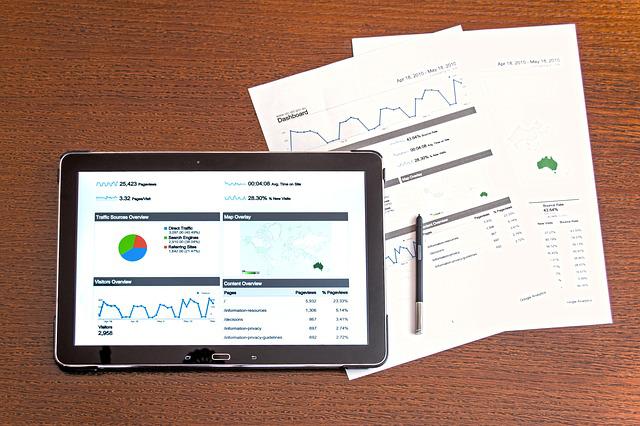
Maximizing Your Potential: How to Master Export Market Research
Export market research is an essential part of any business that wants to enter or expand its operations in international markets. It helps businesses to gain a better understanding of the target market, customer behaviour, and competition. However, to make the most out of your research, you need to define your export market research objectives. In this blog, we will discuss the importance of defining the market research objectives, questions that helps to define the goals, and how to achieve the goals.
Importance of Defining the Market Research Objectives
Defining clear export market research objectives is crucial for businesses seeking to expand their international reach. The key reasons to define the research objectives are
Focus: By setting clear objectives, businesses can focus their research efforts on gathering the right information needed to achieve their goals. Without clear objectives, businesses may waste time and resources on irrelevant or unnecessary research.
Strategical decision-making: Clear objectives help businesses make informed decisions on which markets to enter, how to position their products or services, and how to adapt their marketing and sales strategies to the target market.

Risk mitigation: Through comprehensive market research, businesses can identify potential risks and challenges associated with entering new markets. By identifying these risks early on, businesses can take steps to mitigate them and reduce the likelihood of failure.
Competitor analysis: Market research helps businesses gain a better understanding of the competitive landscape in their target markets. This can help them identify key competitors, assess their strengths and weaknesses, and develop effective strategies for differentiation and gaining a competitive edge.
Customer understanding: By conducting research into customer preferences and behaviors, businesses can tailor their marketing and sales strategies to better meet the needs of their target customers. This can help businesses build stronger relationships with customers and increase the likelihood of success in new markets.
Financial feasibility: Defining clear research objectives can help businesses assess the financial feasibility of entering new markets. By understanding the costs and potential returns associated with market entry, businesses can make informed decisions about whether or not to proceed with expansion.
Resource allocation: Clear export market research objectives help businesses allocate their resources more effectively. By identifying which markets and strategies are most likely to be successful, businesses can prioritize their investments and allocate resources more efficiently.
Effective communication: By setting clear objectives, businesses can communicate their goals and strategies more effectively to internal and external stakeholders. This can help ensure that everyone is on the same page and working towards the same goals.
Market entry timing: By conducting research into market size, growth potential, and customer preferences, businesses can determine the optimal timing for entering new markets. This can help them avoid entering a market too early or too late, and increase their chances of success.
Continuous improvement: Finally, defining clear export market research objectives can help businesses improve their processes and strategies over time. By evaluating the results of their research against their original objectives, businesses can identify areas for improvement and make adjustments for future expansion efforts.
Defining clear export market research objectives is not a one-time exercise. It helps businesses stay ahead of the curve and adapt to changing market conditions. As markets and customer preferences evolve, businesses need to continuously monitor and adjust their strategies as they gain new information and insights about their target markets, to remain competitive.
By setting clear objectives, businesses can evaluate their progress and make necessary adjustments to their strategies, ensuring that they stay on track towards their goals, achieving long-term success in international markets.
Defining the Goals
Before conducting research, it's essential to define clear objectives to guide the process and ensure that you gather the right information to achieve your goals. Here are some common export market research objectives:
Identify potential markets: Determine which markets have demand for your product or service and are worth exploring further.
Evaluate market size: Understand the size and growth potential of a market to assess its attractiveness.

Assess competition: Evaluate the competitive landscape in your target markets to identify key players, their strengths and weaknesses, and potential opportunities for differentiation.
Determine market entry barriers: Identify any regulatory, cultural, or logistical barriers to entry in your target markets to assess the feasibility of market entry.
Understand customer needs: Determine the preferences and behaviors of your target customers to tailor your marketing and sales strategies.
Establish pricing strategies: Determine the appropriate pricing strategy based on market dynamics and customer willingness to pay.
Develop distribution channels: Determine the most effective distribution channels for your product or service in your target markets.
Analyze cultural differences: Identify any cultural differences between your home market and your target markets to develop effective marketing and sales strategies.

Analyze political and economic conditions: Understand the political and economic environment in your target markets to assess potential risks and opportunities.
Evaluate potential partners: Identify potential partners, such as distributors or agents, in your target markets to help you navigate cultural and regulatory differences.
Assess legal and regulatory requirements: Determine the legal and regulatory requirements for doing business in your target markets to ensure compliance and mitigate risks.
Determine marketing and communication strategies: Identify the most effective marketing and communication channels in your target markets to reach your target customers.
Evaluate logistics and transportation: Determine the most efficient logistics and transportation options for delivering your product or service to your target markets.
Assess market trends: Stay up to date with market trends and changes in customer preferences to adapt your strategies and stay ahead of competitors.
Determine financial feasibility: Assess the financial feasibility of expanding into your target markets, including potential costs and expected returns.
By setting clear objectives and conducting thorough export market research, you can make informed decisions about expanding your business internationally. This can help you mitigate risks, identify opportunities, and establish a strong presence in new markets.
Achieving Export Market Research Objectives
Defining clear objectives and focusing on the information you need to gather is just the first step. There are several steps in the systematic process, that needs to be followed meticulously to achieve your objectives.
Identify the sources of information: Once you have defined your objectives, you need to identify the sources of information. In today's digital age, there is a wealth of information available at our fingertips, but it is important to ensure that the sources of information are reliable, accurate, and up-to-date.
Online databases: There are many online databases that provide valuable information on foreign markets. These include government websites, trade associations, and industry-specific websites. Some examples include the World Bank's Doing Business database, the US Commercial Service's Export.gov website, and the International Trade Center's Trademap database.
Industry reports: Industry reports provide valuable insights into the target market, including market size, growth potential, and competition. These reports are often produced by market research companies and can be purchased or accessed through a subscription service. Some examples include IBISWorld, Euromonitor, and MarketResearch.com.

Government publications: Many governments provide information on foreign markets, including trade regulations, customs requirements, and market trends. This information can often be accessed through government websites or by contacting the relevant embassy or trade commission.
Trade associations: Trade associations provide industry-specific information and networking opportunities. They can be a valuable source of information on foreign markets, including market trends, regulations, and potential partners. Some examples include the National Association of Manufacturers, the US Chamber of Commerce, and the International Franchise Association.
Market research companies: Market research companies specialize in gathering and analyzing data on foreign markets. They can provide customized research services tailored to your specific needs. Some examples include Euromonitor, Ipsos, and Nielsen.
Collecting data from a variety of sources is important to ensure that you have a comprehensive understanding of the target market. This may involve using both primary and secondary research methods, such as surveys, interviews, and online databases.
Manage and Interpret the data: It is important to organize and manage the data in a way that makes it easy to analyze. This may involve using spreadsheets, databases, or other software tools to store and manage the data.
Interpreting data is a crucial step in the export market research process as it involves drawing valid conclusions. Interpreting data can be challenging, but following the right steps can help you do it effectively.
Check the accuracy of the data: Before you start interpreting the data, make sure that it is accurate and reliable. Check for errors and inconsistencies that could affect your analysis.
Look for patterns and trends: Analyze the data to identify patterns and trends. This may involve looking for similarities and differences between different variables or identifying changes in data over time.

Identify significant relationships: It is vital to understand the identify the relationship between two variables and to identify the underlying factors that affect a particular outcome.
Consider the context: Consider the context in which the data was collected. This may involve looking at external factors such as the economic or political environment that could impact the data.
Use the data to identify the opportunities, challenges, and risks in the target market. This may involve identifying market trends, competitive dynamics, or regulatory issues that could impact your business.
Make informed decisions: Based on the conclusions you have drawn, make informed decisions. Develop a strategy that takes into account your research findings and aligns with your business objectives.
Monitor and evaluating the informed decisions made as a result of export market research is crucial to the success of your business in the target market. By setting up a monitoring and evaluation framework, gathering and analyzing data, taking corrective action, and evaluating your progress, you can ensure that your business is on track to achieve its objectives. By adjusting your strategy as needed, you can continue to optimize your business for success in the target market.
To know more about our services, visit our website: https://www.consultkriba.com
Join our free session on Exports Growth Secret: https://www.consultkriba.com/exports-growth